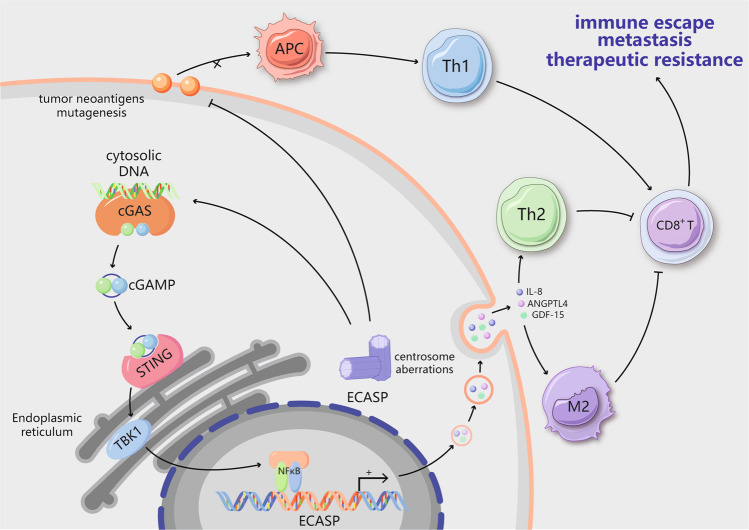Fig. 3.
Centrosome aberrations trigger an immunosuppressive microenvironment. Centrosome aberrations can result in the accumulation of double-stranded DNA (dsDNA) in the cytosol. The presence of cytosolic dsDNA activates the cGAS–STING pathway. In cancer cells with centrosome dysfunction, however, alternative inflammatory STING-dependent signaling, such as NF-κB signaling, is activated. Chronic NF-κB activation has been shown to mediate the extra centrosome-associated secretory phenotype (ECASP) by affecting proteins including IL-8, GDF-15 and ANGPTL4. IL-8 is also one of the components of the senescence-associated secretory phenotype (SASP); it recruits Th2 cells and M2 macrophages to shape the immunosuppressive microenvironment. Additionally, centrosome aberrations contribute to decreased tumor neoantigen expression and mutagenesis, thereby suppressing MHC class I antigen presentation and decreasing CD8+ T cell infiltration to enable evasion of antitumor immune responses. Ultimately, centrosome abnormalities can lead to immune escape, distant metastasis and therapeutic resistance

